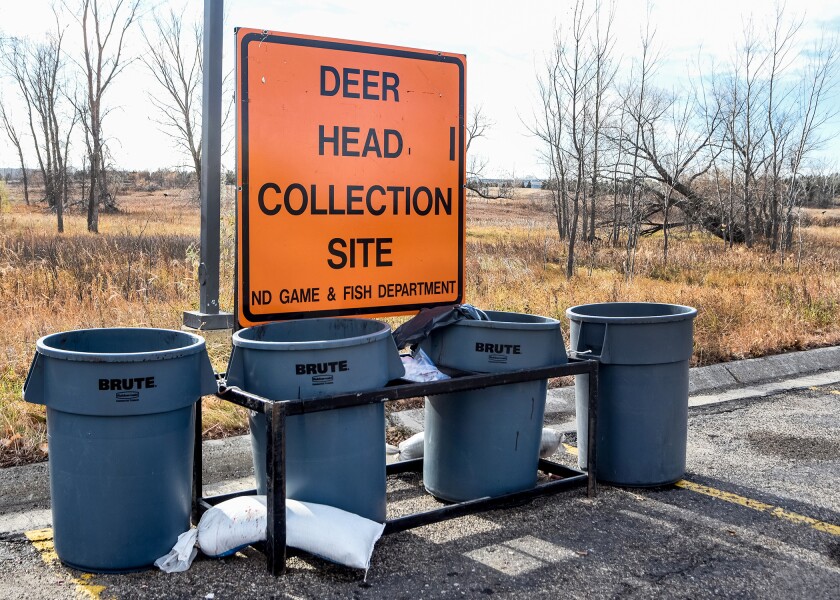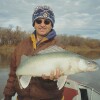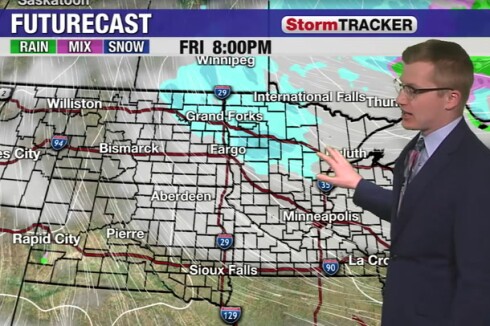BISMARCK -- Casey Anderson is the new Wildlife Division chief of the North Dakota Game and Fish Department, replacing Jeb Williams, who was appointed as Game and Fish director in August. Anderson previously was assistant wildlife chief before being appointed to his new position in September.
A native of the Turtle Lake-Mercer area in McLean County, Anderson is a 20-year department veteran who also held private land field coordinator and biologist positions. He has a bachelor’s degree in the fish and wildlife management zoology option from North Dakota State University.
Anderson recently spoke with Herald outdoors writer Brad Dokken about the new position and other Wildlife Division happenings. Here is an edited transcript of that conversation.
BD: How has the new job been going so far?
CA: I’ve been on the job now for a little over a month. And so far, it’s going pretty good.
ADVERTISEMENT
It’s a little busier as far as phone calls and things like that than before, dealing maybe a little more with the public and less with the department Wildlife Division staff. As the assistant chief, I was in constant contact with a lot of our field staff and things, which was part of the job.
I probably won’t be dealing with budgets and things as much. In the other position, I was essentially putting together the budget for the Wildlife Division and things like that.
RELATED STORIES:
- Read more hunting stories in Northland Outdoors
- Read more fishing stories in Northland Outdoors
- Read more recreation stories in Northland Outdoors
BD: You started the new job right about the time EHD (epizootic hemorrhagic disease) began hitting white-tailed deer with a vengeance in several parts of the state.
CA: I almost knew that was going to be the case when I applied, so I guess I shouldn't be surprised. EHD is a virus spread by a little midge, a biting fly that breeds in mud flats. So we kind of had a perfect storm coming on with this drought.
Obviously, we were always praying for rain and hoping it wouldn’t happen to this level. The other thing that happened, too, is this fall, without a frost, just kind of dragged on. We needed a couple of good frosts in a row to put the midge that spreads the disease at bay.
This is the first time we really had it along the Missouri River here, which was our worst area for the disease. There were some deer that got it farther southwest, but those deer populations down there deal with EHD periodically, probably about every seven to 10 years, and so there's an immunity that will build up in some of the deer that make it through an EHD outbreak.
You also have people who aren’t used to this, either, along this system, and so a lot of people are wondering what’s going to happen, wondering if the deer are ever going to come back and those kinds of things, and so it develops into a lot of questions.
ADVERTISEMENT
BD: Up here along the Red River, EHD wasn’t on the scale of the Missouri River but in a few localized cases, it hurt some landowners or hunting groups pretty hard.
CA: We actually didn’t have very many reports over there, not enough to where we felt that it actually affected the population in a deer hunting unit. If a landowner had some deer on their property, it may affect right there in that small spot, but the (outbreak) we had out here was unit wide, in some cases. Not every part of the unit, but it’s significant enough that folks would notice when they went deer hunting that there was going to be a reduction in the population. That’s why we offered the refunds over here, where we did.
BD: How were whitetail populations doing in the hardest-hit areas before the outbreak?
CA: Going into the outbreak, this area along the Missouri River was doing really well. We had areas there where the population was as good as it’s probably been in a long time.
Time will tell exactly what the EHD outbreak did, but the Missouri River, with the wooded areas and things, has the habitat to potentially bounce back fairly decent in the next year or two or three.
It just depends on what your definition of a deer population is. It takes a little bit longer to grow big, huge antlers than it does to just bring the population up.
BD: How are mule deer populations looking?
CA: The last couple of years, populations have been doing fairly well, from increasing to either stable or increasing. We just got done with our surveys. Mule deer being a critter with their white rumps, we can survey them fairly easily in the fall once the leaves drop off the trees.
ADVERTISEMENT
We just finished up that survey, wondering what was going on with them over the drought period. We haven't totaled the numbers up yet, but there were some areas where fawn production wasn’t so great. Then, there were other areas where it looked fairly good to really good.
One thing that our guys did notice is that antler growth was maybe down a little bit this year, just from the drought and the quality of feed sources that were out there.
As we put these numbers together this fall here, we’re hoping that we held steady. When those numbers get put together all the way, we’ll be able to give you a little better idea.
BD: It seems there’s been a slow, steady uptick in deer gun licenses after bottoming out back in 2014 (72,200 deer gun licenses this year vs. 48,000 in 2014). Will we ever get back to the days of nearly unlimited bonus tags like the early 2000s? Do we even want to get back to numbers like that?
CA: From about (2005 to 2007), we probably had over 110,000 licenses. People could get multiple licenses in most of the units across the state. To get back to that point, it’s going to take habitat, it’s going to take quite a bit of it. The landscape has changed for many different reasons over the last 10 years here.
And realistically, with the way the landscape is right now, I don’t think the tolerance level would be there from the people living on the landscape, the people driving through the landscape, because we just don’t have the habitat.
BD: As wildlife chief, what do you see as the biggest challenge facing wildlife in North Dakota right now?
CA: The biggest challenge is just going to be maintaining habitat or increasing it out there. There are a lot of pressures on it, whether it’s cities expanding or development of whatever kind. There’s landowners out there who are making decisions on their property one way or the other, and not all of them decide to have more habitat on their land. That’s going to be the biggest thing moving forward.
ADVERTISEMENT
The other thing that I would say will be a challenge is it’s always a balancing act of what we do, balancing people’s interests with wildlife on the landscape.
BD: Chronic wasting disease has been at the forefront in recent years. How important is it for hunters in CWD test units to bring deer heads in for testing?
CA: If you’re hunting in an area that we’re actively testing, we encourage them all to drop off their deer head at a collection site. And obviously, follow the transportation rules that are in place so that we’re not spreading it to new areas if we can help it.
With CWD, you want to catch it early if it gets into a new area. You also want to know what’s going on with the population: Is the infection rate getting higher in an area where you already have it? Are we maintaining it? Slowing it down? If we don’t get the voluntary deer heads from these hunters that are harvesting deer, we can’t gauge anything that’s going on on the landscape as far as new disease areas.

BD: Has the department ever talked about making the testing mandatory in CWD units?
CA: We have talked about it. It always seems like mandatory stuff does not necessarily get you the best information. There’s a myriad of reasons why that is.
ADVERTISEMENT
That being said, we need to get enough samples. We don’t need every single head in the unit, necessarily. That would be nice, but to get to a statistical look, we would like more than we’re getting. You can do it without making it mandatory if you get enough hunters concerned about the future of the deer herd, essentially.

BD: How has the new electronic posting system been going so far?
CA: A lot of landowners that we’ve talked to that used the system thought it was really easy, and it actually only gets easier next year for them because their properties – unless they change properties or something – will already be in (the system). So, they’ll more than likely just have to certify that it’s all the same instead of adding it all in.
The other thing is, it’s a mobile/electronic device-type of system. We’ve had a few hunters that aren’t as familiar with mobile devices or electronic devices and so they’re having more of a struggle with it, obviously, because that’s how you utilize the system.
And so, some people really like it; there’s a subset of people who don’t like it.
BD: In terms of hunting, what’s your favorite – upland, deer, waterfowl or all of the above?
ADVERTISEMENT
CA: I would say I’m a sharp-tailed grouse hunter who likes waterfowl hunting. I don’t do a lot of pheasant hunting – I did more when I had a dog. We just got a puppy, so hopefully that’s coming up. I really like watching the dog work, for pheasants, grouse and waterfowl.
Growing up in the Turtle Lake-Mercer area, I had a lot of sharptail opportunities and a lot of waterfowl opportunities. And so I grew up doing that.
I always liked deer hunting, but I’ve gotten into (other) big game hunting as I’ve gotten older. We really love pronghorn. We love the meat, and they’re fun to hunt. It’s not as easy of a tag in North Dakota to get.
I am pretty much a generalist when it comes to hunting. If I have the opportunity to hunt something, I’ll probably hunt it. It comes down to timing and the time I have to do it and what’s available to hunt at the time.









